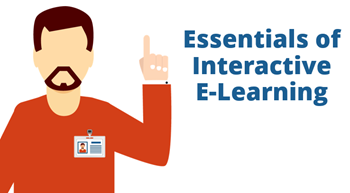
At a recent workshop, we reviewed some of the essentials of interactive e-learning. Here are some of the highlights from the presentation. They focus on what the course participant should DO and not what information they need to SEE.
Basic Course Design
We discussed this in the post on what every new instructional designer should know. When building courses there are three main considerations:
- What content needs to be in the course?
- What’s the right look and feel for the course?
- What will the users do in the course?
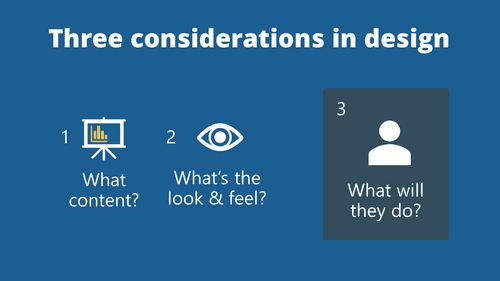
This last point is where we consider how the user interacts in the course. One of the challenges many e-learning developers have is that they don’t properly identify the performance objectives for the course and without that, they can’t build meaningful interactions.
The first thing is to understand the performance expectations and then from there build the interactions and activities that teach how to meet those expectations.
Objectives for Interactive E-Learning
It’s important to step away from info-centric design and step towards learner-centric design. A course focused on the learner frames the content so that it’s relevant to the learner’s needs and meaningful to the types of decisions they need to make in the real world.
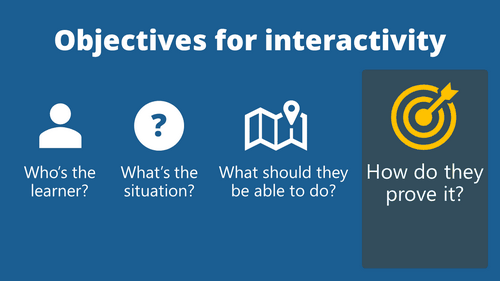
- Identify who’s taking the course.
- In what situations would they need the course content?
- After the course, what should they be able to do?
- How do they prove they can do it during the course?
Use a Backward Design Strategy to Focus On Meaningful Interactions
Training specialists always fret over the return-on-investment (ROI) for e-learning. That’s usually the case when they’re not properly aligned to the organization’s goals and end up building a lot of information-based e-learning with very little focus on real performance improvement. It’s like they shoot a bunch of arrows during the year; then at the end of the year draw bull’s eyes around them to show the organization how well they’ve done.
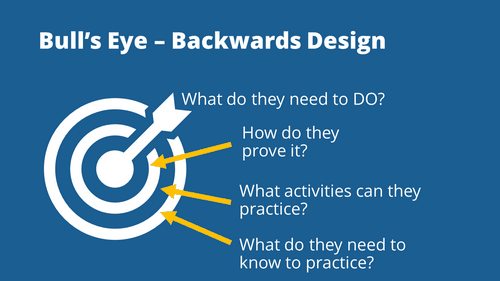
- The real bull’s eye is identifying what the learner needs to do.
- Then determine how they can prove that they can do it.
- Training is built around how to prove their understanding.
- Focus on the activities. What do they need to do and what do they need to know to do it.
If you focus on the activities and not the information, you’ll most likely built more effective, engaging, and interactive e-learning.
Good books to learn more:
The links to Amazon books may produce a slight commission.
When it all comes down to it, effective interactive e-learning is built around meaningful activities that are relevant to the learner and aligned with the organization’s goals. The mistake a lot of course designers make is to not properly define the performance objectives and from there build meaningless or no interactivity.
Events
Free E-Learning Resources










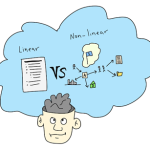

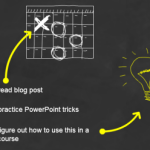






0
comments